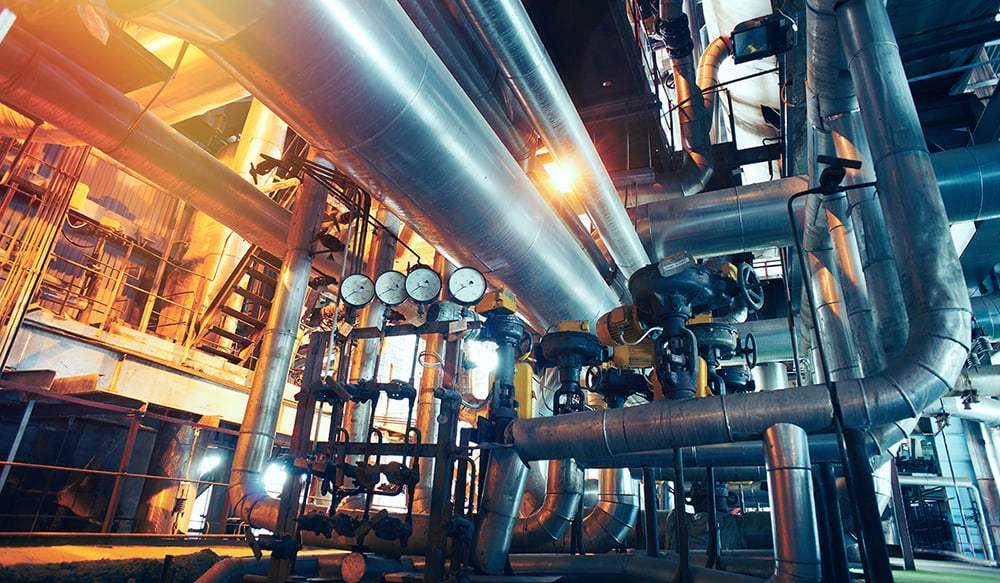
A pipe support is a pipe support, right? Not exactly. The more you research pipe supports for your system, the more you’ll realize how much they can vary. Throughout that search, a common question comes up: Will I benefit from adjustable pipe supports?
We’re here to help you find the answer. We’ve outlined the key differences that set adjustable supports apart and have laid out their advantages.
What Is an Adjustable Pipe Support?
Simply put, adjustable pipe supports are restraints that can be manually adjusted. That usually means their nuts and bolts are arranged in a way that makes it possible for you to tighten, loosen, or move them.
What Types of Adjustable Pipe Supports Are Out There?
Overall, most types of rigid supports can be designed to be adjustable. These rigid supports are your pipe restraints. That means that they restrict movement in at least one direction.
One example of an adjustable pipe support is a hold-down strap. When this support is buckled down, it stops pipes from moving up and down or side to side. It guides pipes axially while absorbing vertical vibrations. However, because the strap is threaded onto a support via nuts, it can be adjusted.
Although most rigid supports can be designed to be adjustable, this doesn’t mean that all rigid supports are adjustable. For instance, clamps can also be welded directly onto I-beams or supports. But basically, if the support doesn’t feature nuts, bolts, or another way to be maneuvered once it’s fixed, then it isn’t adjustable.
The Advantages of Adjustable Supports
Adjustable supports aren’t always given the credit they deserve. People sometimes wrongly assume that because they can be manipulated they aren’t sturdy. However, their flexible options actually encourage durability. This is because they allow you the ability to adjust the support to fit your system in a more strategic way. With that broad advantage in mind, here are some other conveniences that come with adjustable supports:
Safety
Unfortunately, “significant pipeline incidents” cost companies in the oil and gas industry more than a billion dollars last year. If problems come up and systems go awry, it’s usually better to have more flexible options. This is especially the case when a job is exposed to severe weather conditions or potential natural disasters.
Because they generally don’t require heavy lifting or skilled labor to adjust, it’s easier to loosen adjustable supports in the face of a disaster or disassemble them to stop further damage. When the dust settles, they also make it easier to recalibrate and reinforce pipes.
Convenience
Sometimes, no matter how well you think you’ve planned out a job, little things can come up and spoil everything. Maybe a measurement is slightly off or the elements threw a kink into your estimations. No matter the cause, adjustable supports make those little changes no big deal.
For example, when you’re using hangers to suspend pipes, it’s important to make sure that the pipes don’t sag. Sagging pipes can lead to pooling, concentrated areas of pressure, and ruptures. With an adjustable hanger system (paired with a turnbuckle), you can adjust the system’s slack, and straighten pipes out without disassembling parts.
Maintenance
If you’ve paired your pipes with the right supports, they should be well protected. However, that doesn’t mean your system won’t ever need maintenance or minor repairs. When you need to get to pipes for upkeep or fixes, the beauty of adjustable supports becomes clear.
Because adjustable supports can be loosened, tightened, or disassembled, they give you easier access to pipes. This also makes it possible to examine areas underneath the support and protect against corrosion under insulation (CUI).
No Welding
Welding is a marvel when you have to do it, but it should be done as sparingly as possible. Welds require specialized labor and treatment. More importantly, anytime you have to weld within your system, there’s the danger of weakened spots or places that are vulnerable to chloride stress corrosion cracking.
This is another less frequently considered advantage of adjustable supports. These supports are put in place via nuts and bolts, and so they don’t require welding. That means less exposure to corrosion and fewer immobile areas to have to work around.
Want to Learn More About Pipe Supports?
If you’re looking for flexibility in your piping system, adjustable pipe supports could be the right solution. Still, finding the perfect pipe supports for your system takes some research.
Want to learn the ins and outs of pipe restraints and how they contribute to longer-lasting pipes? Read The Complete Guide to Pipe Restraints.






